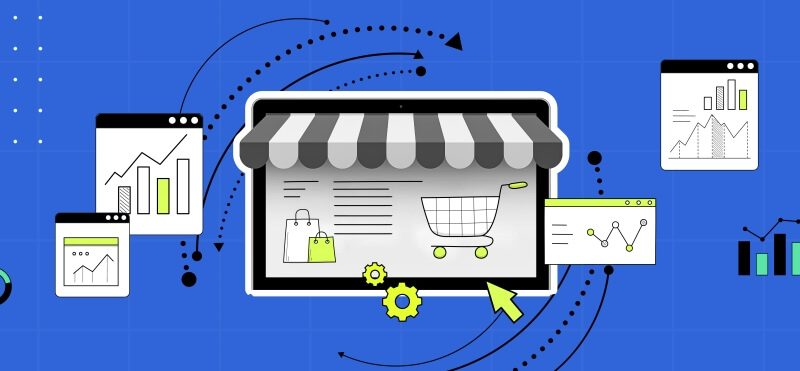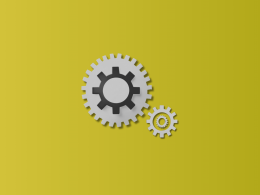As a business owner or marketer, you know how important it is to have a successful product that stands the test of time. However, no matter how great the product is, it will eventually face the dreaded product life cycle. This cycle can be daunting, especially if you’re not prepared for it. But don’t worry, there are ways to prolong your product’s lifespan and ensure its success for years to come.
In this article, we’ll explore tips and tricks for surviving the product life cycle. From identifying the stages of the cycle to implementing effective strategies for each stage, we’ll cover everything you need to know to keep your product thriving. So, read on to learn how to survive the product life cycle and keep your product relevant and profitable.
Understanding the product life cycle
Every product goes through a life cycle. Understanding this cycle is crucial for any business owner or marketer who wants to maximize the product’s success. The product life cycle is a concept that describes the stages a product goes through from its introduction to its decline.
The four stages of the product life cycle
There are four stages in the product life cycle: introduction, growth, maturity, and decline. Each stage represents a different challenge and requires a different strategy to ensure the product’s success.
Introduction
The introduction stage is the first stage in the product life cycle. This is when the product is first introduced to the market. At this stage, sales are typically low, and the product is not yet profitable. The challenge at this stage is to create awareness of the product and generate interest among potential customers.
To overcome this challenge, businesses need to focus on marketing and advertising. This can be done through various channels, such as social media, email marketing, and influencer marketing. The goal is to create a buzz around the product and generate excitement among potential customers.
Growth
The growth stage is the second stage in the product life cycle. At this stage, sales start to increase, and the product becomes profitable. The hurdle at this stage is to maintain the momentum and continue to grow sales.
To achieve this, businesses should expand their customer base and increase the product’s market share. This can be done by offering promotions, improving the product’s features, and expanding the product line.
Maturity
The maturity stage is the third stage in the product life cycle. At this stage, sales growth starts to slow down. The challenge at this stage is to maintain the product’s market share and profitability.
Businesses can tackle this by retaining their existing customers and finding new customers in new markets. This can be done by improving customer service, offering loyalty programs, and expanding distribution channels.
Decline
The decline stage is the final stage in the product life cycle. At this stage, sales start to decline, and the product becomes less profitable. The difficulty at this stage is to extend the product’s lifespan and find new uses for it.
Innovating and finding new ways to use the product, is a great way to overcome this issue. This can be done by repurposing the product, finding new markets, or introducing new features.
Learn about PLM software in our beginner’s guide.
Strategies for introducing a new product
When approaching the first stage of the product life cycle, you might find yourself working on several fronts, marketing and advertising, customer care, and product changes.
During the introduction phase, you want to put your product onto the market, that’s why working on various channels like paid advertising, social media posts or more traditional forms of marketing will be your main endeavors.
However, you can’t forget that since it’s a new product apart from sales you need to also create awareness about your product. Hence, strategies based on content or influencer marketing might be the right fit at this stage.
Strategies for maximizing growth
The growth stage gives you plenty of opportunities to understand your clients’ needs better. Your customer support team will get plenty of feedback on how your product resonates with various audiences and how well it meets their needs. So one effective strategy for maximizing growth is to focus on customer needs. By understanding what customers want and need, businesses can develop products that meet those needs and create a loyal customer base.
Another strategy is to focus on customer service. By providing excellent customer service, businesses can retain their existing customers and attract new ones through positive word-of-mouth or online testimonials.
Overcoming the maturity plateau
The maturity stage can be challenging for businesses, as sales growth starts to slow down. To overcome this, businesses need to focus on retaining their existing customers and finding new customers in new markets.
One effective strategy for overcoming the maturity plateau is to focus on product differentiation. By offering unique features or benefits that competitors don’t have, businesses can stand out in a crowded market and attract new customers.
Focus on innovation and introduce new features. By constantly enhancing the product, businesses can keep it relevant and attract new customers. You can extend the product’s lifespan by improving the product to better fit the changing needs of the customers.
Understanding the decline stage
The decline stage can be difficult for businesses, as sales start to decline, and the product becomes less profitable. To extend the decline stage, businesses need to focus on finding new ways to use the product.
One effective strategy is to repurpose the product for new uses. By finding new applications for the product, businesses can create new markets.
During the decline stage, it’s worth to take a stock of all advertising and marketing efforts. It might be prudent to cut some of those expenses, as pouring more money into a declining product might further add to losses rather than increase your profits.
In other words, the decline stage encourages you to look closely at the product itself and related operations to make sure you optimize your efforts and possibly phase out the product without damage to the brand and the company.
The importance of customer feedback
Customer feedback is crucial for the success of any product. By listening to customer feedback, businesses can identify areas for improvement and develop products that meet customer needs.
One effective strategy for gathering customer feedback is to conduct surveys or focus groups. By asking customers for their opinions and suggestions, businesses can gain valuable insights into how the product resonates with their customer base.
Another strategy is to monitor social media and online reviews. By paying attention to what customers are saying about the product, businesses can identify areas for improvement and respond to customer concerns.
Using data to inform product decisions
Data is critical for the success of any product. By using data to inform product decisions, businesses can make informed choices that maximize the product’s success.
Analyzing sales data is a great way to gain valuable insights. By looking at sales trends and customer behavior, businesses can identify areas for improvement and develop strategies for maximizing growth.
Another strategy is to use data to inform marketing decisions. By analyzing customer demographics and behavior, businesses can develop targeted marketing campaigns that reach the right customers at the right time.
Conclusion: Embracing change and adapting to survive
The product life cycle is a natural part of any product’s journey. By understanding the stages of the cycle and developing effective strategies for each stage, businesses can maximize the product’s success and ensure its longevity.
To survive the product life cycle, businesses need to be willing to embrace change and adapt to new challenges. By focusing on customer needs, providing excellent customer service, and using data to inform product decisions, businesses can stay ahead of the curve and keep their products relevant and profitable for years to come.



![How to Use Afterpay on Amazon: Can You Use Afterpay on Amazon [A Using Afterpay Guide]](https://synder.com/blog/wp-content/uploads/sites/5/2023/05/how-to-use-afterpay-on-amazon-260x195.png)


